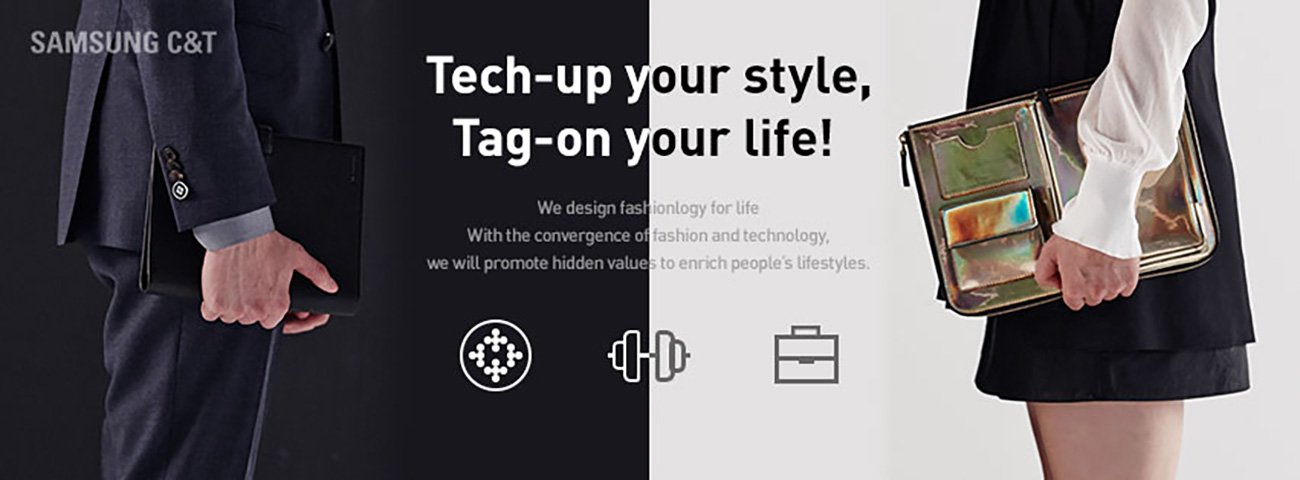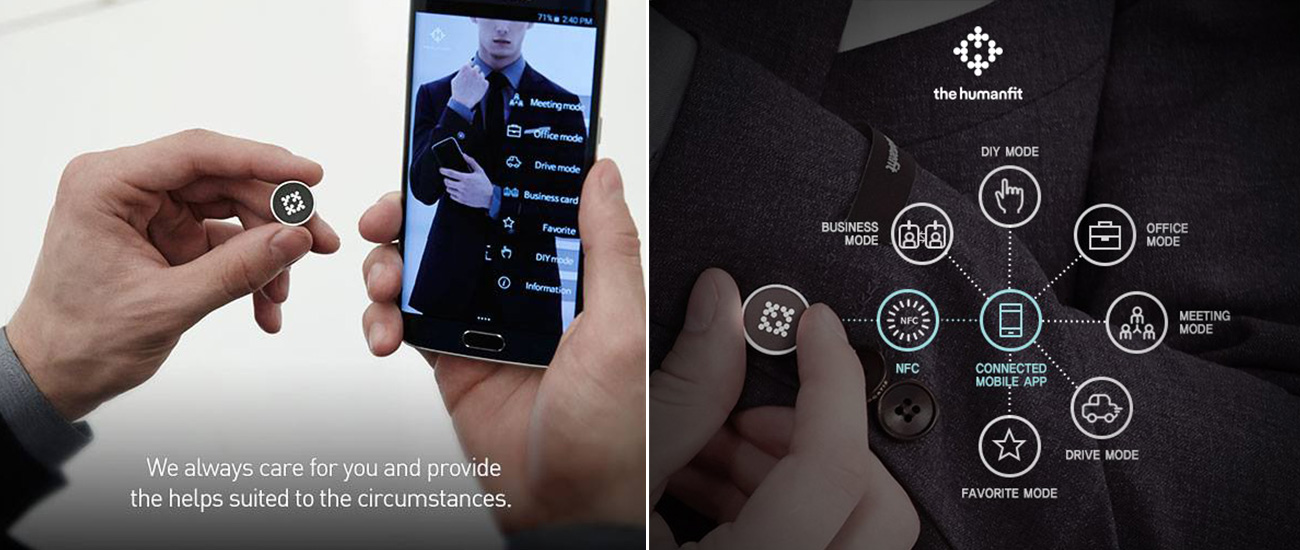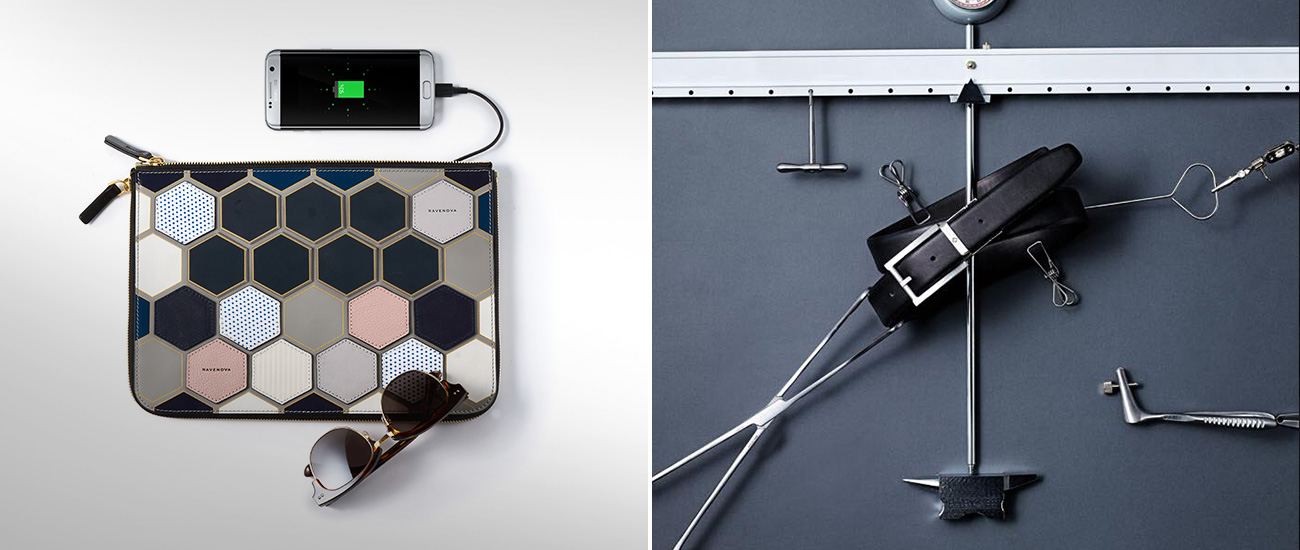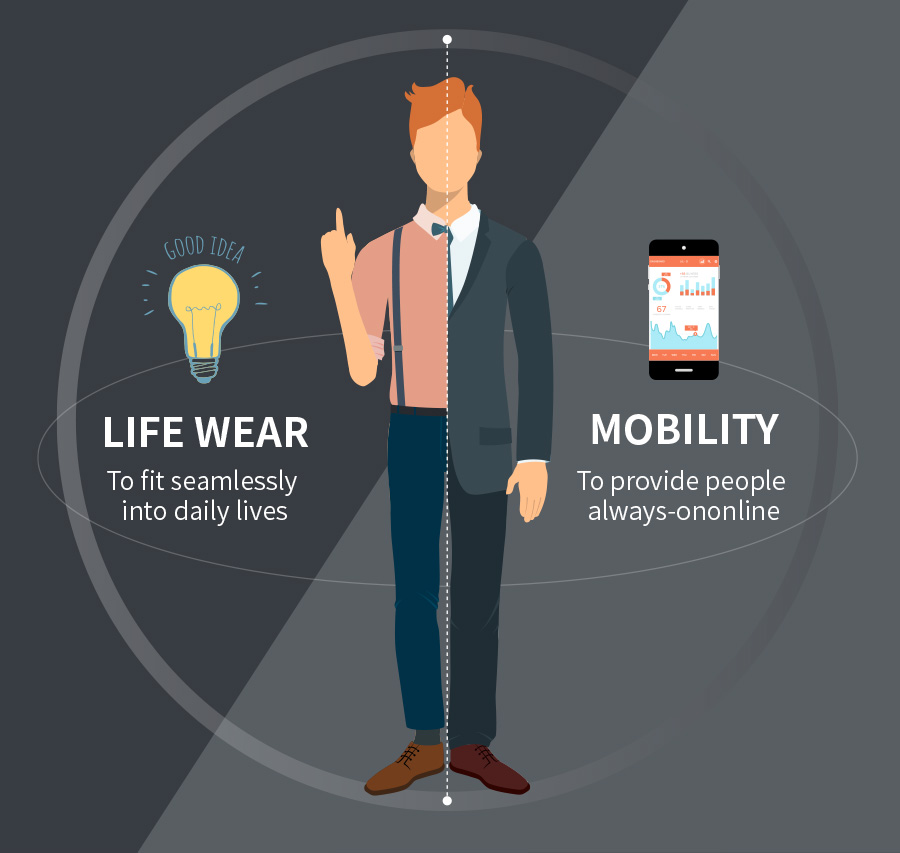Note: This is the latest in a series of articles on the Samsung C&T Newsroom that examines the ways technological innovations such as smart devices, the Internet of Things (IoT), advanced software, drones and robotics are currently transforming the world of housing, construction software, fashion and leisure.
When most people think about technology and fashion, what comes to mind are wearable devices like wrist-mounted fitness monitors or optical headwear like Google Glass.
But what happens if IT advances allow chips, sensors and more to be embedded into your clothes, leaving your wrists and face free from clutter?
Samsung C&T Fashion Group has been asking this very question, and has come up with some remarkable developments, all part of its humanfit platform, with its stated aim to go “beyond wearables.”
Innovations like these have not only made the fashion world sit up and take note, but also the tech industry. As Carmelo Anthony, NBA player and tech investor says, “Wearables have to look good, feel good […] and feel comfortable.” One obvious way to do this is to incorporate tech into fashionable clothing.
So as wearables become truly wearable, consumers can prepare for a lifestyle upgrade that takes in everything from inventive sportswear to boardroom-ready business attire.
Smart Business Outfits
Imagine stepping into an important business meeting and suddenly realizing your phone’s ringer is on. Nothing looks worse than ruining the first few moments of an important meeting by fiddling with your phone.
Designers like those at Samsung C&T brand Rogatis have recognized the need to eliminate moments like this. The brand’s Smart Suit 4.0 features a near-field communication (NFC) tag embedded in its sleeve button that syncs with an app on your smartphone.
Simply touch your phone to your sleeve and your phone switches to silent mode. The tech also allows you to launch an app or even send out an electronic version of your business card.
Advanced Accessories
Smartphone-related technology is all very well when you are on the go, but what happens when your device runs out of battery?
The makers of Sol Bag have an answer to this – a solar-powered handbag.
Just pop your device inside the bag and it juices your phone up when the sun’s rays hit its exterior panels – it is a green, renewable power source that also looks good while keeping your smart devices smart for even longer.
For men, the WELT, which looks and functions like a normal belt, helps you stay trim without looking obtrusive. It communicates with your phone, telling you when you’ve been overeating, how long you’ve been sitting down for and when you ought to start moving around again.
Although still a prototype, the WELT has already won positive reviews from media outlets after a successful showing at the Consumer Electronics Show (CES), held in Las Vegas earlier this year. In fact, a tech site CNET said Samsung C&T had displayed the “coolest wearables at CES 2016.”
Hi-tech Workout Wear
Smart fitness wear is designed to make life easier at the gym and on the track.
Also still a prototype, the Body Compass 2.0 is a sports shirt developed by Samsung C&T’s Fashion Group in association with Samsung Electronics. The shirt lets you track and control your exercise habits, and even provides you with coaching while you work out.
It is like a smart fitness device, but does not call for its wearer to sport a cumbersome wrist-based gadget or strap-type heart rate monitor, which many exercise fans consider “irritating.”
And with a wide range of advanced features, including heart rate, respiration and muscle monitoring, the Body Compass 2.0 goes well beyond the functions of a standard activity tracker.
Cutting Edge
Smart fashion is just getting started. As textiles advances and IT innovations continue to gather pace, more smart fashion developments are on the way.
Scientists are looking at exciting ways to fuse fashion and technology. Columbia Engineering graduate students last year participated in a schoolwide smart fashion competition.
The winning entry was an innovative insole for shoes built for people with bad posture or athletes training for major sports events. Embedded with sensors that send out vibrations when wearers start walking or running with an inappropriate gait, inventions such as these could correct bad posture and prevent injuries – and were even used by Olympians at the Rio 2016 games.
Seamless Blend
With all of these new innovations in wearable technology, the future of smart fashion looks bright. Brands are coming up with products that are more intelligent, more functional and – crucially – more integrated with the design process.
Although much of what has already been developed is still in its conceptual stage, commercially available items are now starting to emerge. With more functions and sharper aesthetics, fashionistas and tech specialists are suddenly discovering they have a lot more in common than they first thought.
Sources
Carmelo Anthony Merges Tech, Sports, & Fashion, Milk, 9 March 2015
Irritating Chest Strap Heart Rate Monitor, Runner’s World, 8 May 2014
Gartner Predicts By 2017, 30 Percent of Smart Wearables Will Be Inconspicuous to the Eye, Gartner, 10 December 2014
Tech Wear: Engineering Challenge Spotlights Wearable Devices, Columbia University, 23 April 2015
Prediction: Smart clothing, body sensor shipments to reach 92.7M units in 2021, Mobi Health News, 2 May 2016













